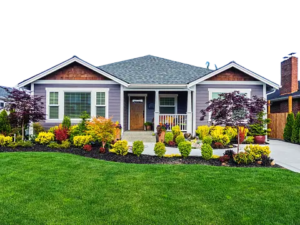Remodeling your home is a smart way to improve its value, style and condition. This effort can also maintain or improve the home’s functionality and relevance for your daily living needs.
Regardless of whether you are trying to decide if you can afford to complete your various desired home improvement projects or if you are ready to take the first step to get started, proper budgeting and financial planning is essential. Walking through these steps carefully will help you to create a detailed and accurate renovation budget.
Define the Scope of Your Project
Your budgeting effort begins when you create a detailed list of all sub-projects that you wish to complete. For example, rather than write down that you want to renovate the kitchen, create a line item for each aspect of the project.
This may include replacing the cabinets and counters, updating light fixtures, replacing appliances and more. Itemizing each specific task will help you to create a more accurate budget going forward.
Research Average Costs
Before you move into the next few steps, a smart idea is to research average improvement costs through the Internet. This can help you to determine if you should narrow down the scope of your project so that it is more suitable for your available funds.
For example, you may be able to save a considerable amount of time researching costs for a full home renovation if you can only afford to replace the flooring and light fixtures at this time.
Get Labor Quotes
Once you have a better idea about the type of work that you need completed in your home at this time, request labor quotes from skilled experts. Ensure that the companies or individuals who you contact are licensed and insured, and read reviews before requesting estimates.
Some professionals may include the cost of supplies and materials in their estimate. While this is reasonable, it may impact your effort on the next step.
In addition, avoid assuming that the supplies and materials that they may provide are the most affordable options available.
Select Materials
In addition to the cost of labor, the cost of materials and supplies is the other major component to home renovation expenses.
The quality and type of materials that you select as well as where you purchase them from can result in huge price variations. To keep expenses as low as possible, spend ample time reviewing pricing on different materials and supplies that may be needed for your project.
Plan for Contingencies
Many home renovation projects do not go exactly as planned. For example, you may identify hidden damage that must be repaired after the drywall is removed. To account for these unknowns, add a contingency fund to your budget. You may need a larger contingency fund for an older home than for a newer home.
After you have taken these steps, you will have a detailed and accurate home improvement budget available. Before you begin any demolition at home, take the additional step of pulling together financial resources to fund the entire project.
This will ensure that you do not run out of cash before the work is completed. If cash is not available, consider taking out a home improvement loan, refinancing your home mortgage or taking other significant steps to raise the necessary funds.

Leave a Reply
You must be logged in to post a comment.